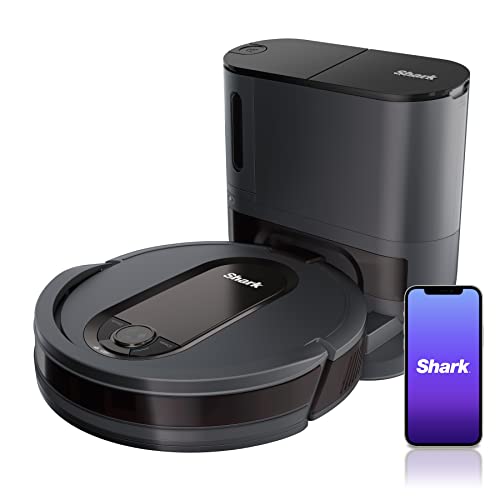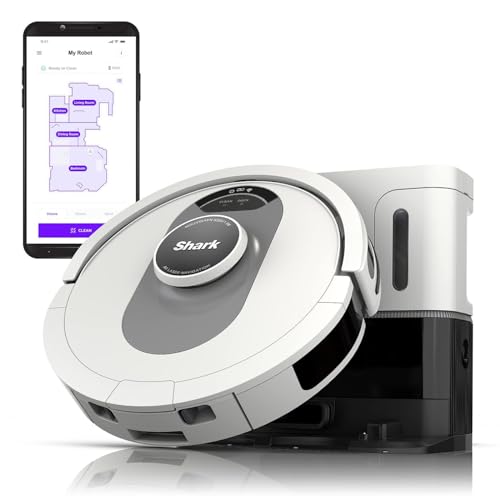What's The Job Market For Bagless Robot Navigator Professionals?
페이지 정보
작성자 Rudolf Villagom… 댓글 0건 조회 31회 작성일 24-09-10 23:11본문
 The Bagless Robot Navigator - A bagless smart vacuums Robot Vacuum That Can Navigate Your Home Without an External Base
The Bagless Robot Navigator - A bagless smart vacuums Robot Vacuum That Can Navigate Your Home Without an External BaseFor a robotic vacuum of this price, it's surprising how much this tiny robot packs into its bagless compact vacuums, affordable design.
This bump bot is different from other bumpbots, which rely on rudimentary random navigation. It creates an image of your house and avoids obstacles such as cords for lamps.
After a thorough cleaning The robot will empty itself into the dock without bag. The robot will then recharge and continue from where it left off when its battery gets depleted.
Room-by-Room navigation
If you're looking for a robot vacuum that can navigate your home without the need of an external base, then it's likely that you'll need to look into options that offer room-by-room navigation. This technology allows robots to build a map and see the entire house which allows them to navigate more efficiently. This will help to ensure that every room is cleaned and the corners and stairs are protected.
Usually, this is accomplished by using SLAM (Simultaneous Localization and Mapping) technology, though some robots employ other techniques. Some of the newest robots available like Dreame's Dreame, use Lidar navigation. It is a type of SLAM which is more advanced. It uses multiple lasers to scan the environment and measuring reflected light pulses to determine where it is in relation to obstacles. This can boost performance further.
Wall sensors are another technology for navigation that can keep your robot from pinging walls and large furniture. This could cause damage to the robot and the floor. Some of these can be used as edge sensors to assist the robot navigate along walls, and keep away from furniture edges. They're extremely beneficial, especially if live in a house with multiple levels.
It is possible that certain robots have cameras integrated and can be used to make an interactive map of your home. This is usually paired with SLAM navigation, however it's also possible to find models that utilize cameras alone. This could be a reasonable alternative for some, but it comes with a few drawbacks.
The random navigation robot faces a problem in that it cannot remember which rooms it has already cleaned. If you're trying to clean the entire house it's possible that your robot may end having to clean the same room twice. It's possible that the robot could completely leave out certain rooms.
With room-by-room navigation, the robot can remember which rooms it's already cleaned, which decreases the time required to complete each cleaning. The robot can be directed to return to the base when its battery is running low. And, an app can show you a map of where your robot was.
Self-Empty Base
Self-emptying bases do not have to be empty every time they're utilized unlike robot bagless cutting-edge vacuums, which need to empty their dustbins after every use. They need to be emptied once they are full. They are also much quieter than onboard dustbins of robot bagless cutting-edge vacuums which makes them perfect if you suffer from allergies or have other sensitivities or allergies to loud sounds.
A self-emptying base typically includes two water tanks to clean and dirty water, as and a storage area for the company's floor cleaning solution, which is automatically mixed with water and dispensing when the robot mop is docked into the base. The base is also where the mopping pads are stored when not in use.
Most models that feature self-emptying bases also come with a pause and resume function. You can stop the robot, return it to its dock or self-empty Base for recharging before continuing the next cleaning session. Some also have cameras that can be used to set no-go zones, see a live feed of your home and alter settings such as suction power and the amount of water dispersed during mopping.
If the light on your dock or Self-Empty base glows a solid red the battery power of your robot is not sufficient. It requires recharged. It can take between two and seven hours. You can manually take your robot back to its dock by using the app or by pressing the Dock button on your robot.
It's important to regularly check your base for any blockages or other issues that might hinder its ability to transfer dry debris from the dust bin onboard to the base. Also, make sure that the water tank is filled up and that the filter is cleaned regularly. It's a good idea also to take off the brushroll of your robot as well as remove any hair wraps that may block the debris path in the base. These steps will help to keep your robot's Self-Empty base and ensure it's running smoothly. You can always contact the manufacturer should you have any problems. They will usually guide you through the troubleshooting process or offer replacement parts.
Precision LiDAR Navigation System
LiDAR, which is a shorthand for light detection and ranging, is a key technology that enables various remote sensing applications. It is used to produce detailed maps of terrain, as well as to monitor the conditions during natural disasters and to evaluate the need for infrastructure.
The accuracy of LiDAR data depends on the resolution of the laser pulses being measured. The higher the resolution, the more detail a point cloud can have. Additionally, the stability of the cloud is influenced by system calibration. This entails evaluating the stability of a point cloud within a swath flight line or between swaths.
Apart from providing more detailed topographic maps, LiDAR can also penetrate dense vegetation and create 3D models of the terrain underneath it. This is an advantage over traditional methods which rely on visible lights particularly in the rain and fog. This can significantly reduce the time and money required to study forest landscapes.
With the emergence of new technologies, LiDAR systems have been enhanced with innovative features that provide unbeatable precision and performance. One example is the dual GNSS/INS integration. This allows for real-time processing of point cloud data with high precision and a full density. It also eliminates manual boresighting making it easier to use and cost-effective.
In contrast to mechanical LiDARs which typically use spinning mirrors to direct laser beams, robotic LiDAR sensors utilize digital signals to transmit and measure laser light. The sensor records each laser pulse, allowing it to measure distances with greater precision. Additionally, digital signals are less susceptible to interference from environmental factors like electromagnetic noise and vibrations, resulting in more stable data.
LiDAR can also identify surface reflectivity, which allows it to distinguish between different materials. For instance, it can tell whether a tree's trunk is standing straight or lying down by the force of its first return. The first return is typically connected to the most prominent feature in a given area, such as an edifice or a treetop. The last return can represent the ground, if that is the only thing detected.
Smart Track Cleaning
The X10 will detect and follow your movement while cleaning. Simply push the robot around and it will start following you, using mop pads or vacuum to clean your route as you move around. This feature will save you time and energy.
It also utilizes a new navigation system that combines LiDAR and traditional bounce or random navigation to help you find its way through your home. This lets it recognize and navigate obstacles better than random bots. Its sensors also have an improved field of view and detect more objects in the room.
This makes the X10 more effective in maneuvering around obstacles than the average robot, and its capacity to recognize objects such as shoes, charger cords, and fake dog turds are impressive. The X10’s smart object recognition system enables it to keep these objects in mind so that the next time it is near it, it will not ignore them.
The sensors on the X10 offer a wider field of view, so the sensor is now able to detect more clutter in the room. This helps the X10 become more efficient in moving around obstacles and removing dust and debris from floors.
The X10 mop pads are also more effective in picking up dirt from carpets and tile. The pads are thicker and have an adhesive that is stronger than average pads, which helps them stick better to hard-surface floors.
The X10 can also be set to automatically alter the cleaning pressure to the type of flooring. It will then apply more pressure to tile and less pressure on hardwood floors. It can even determine the amount of time it will need to remop, based on the dirt levels in its reservoir of water.
 The X10 utilizes the latest VSLAM technology (virtual space light mapping) to create an architectural plan of your space while it cleans. This map can be viewed and managed in the SharkClean App.
The X10 utilizes the latest VSLAM technology (virtual space light mapping) to create an architectural plan of your space while it cleans. This map can be viewed and managed in the SharkClean App.댓글목록
등록된 댓글이 없습니다.